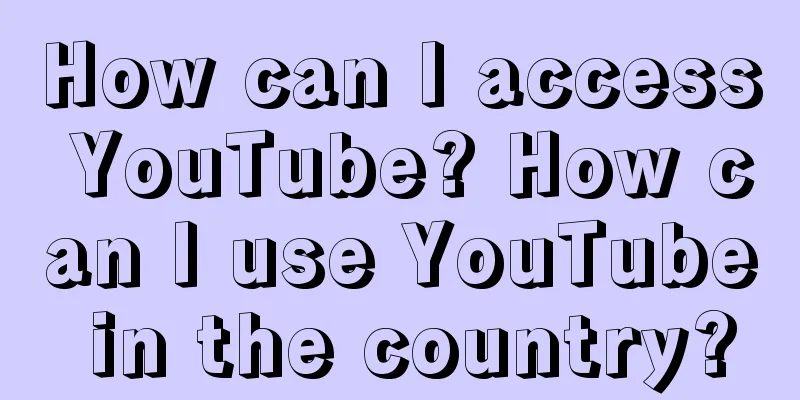Top 10 Overseas Digital Advertising Events in 2022

Throughout 2022, the most important events overseas are almost all related to the existence of third-party cookies. In other words, most of the landmark events in overseas digital advertising in 2022 are the continuation of the changes in 2021. As these industry blockbusters are dropped, many overseas practitioners have begun to think further about the future of digital advertising, so we can almost see a variety of new digital advertising products centered around the possible future. We can also see B2B companies that used to be behind the scenes stepping forward to talk directly with consumers, or companies responding differently to the same event. But it is undeniable that giants such as Meta, Google, and Apple still play an important role in the entire digital advertising industry. To some extent, their changes even represent the precursor and trend of changes in the industry. Since the beginning of 2022, changes in overseas digital advertising companies have almost never stopped. Data privacy, cookies, inflation and the epidemic have profoundly changed the consumption habits of almost all overseas consumers. For example, as data privacy becomes a concern hanging over the heads of every digital advertising company, data clean rooms, privacy-protecting advertising technology products, and retail media that eventually become data safe havens because they have their own legal first-party data have emerged overseas. From platforms to marketing practitioners, everyone is moving forward in constant change in 2022. With the official launch of Google PMax and Meta ASC, artificial intelligence, a concept that has long been regarded as hype, is quietly changing the form of many advertising products, as well as the ideas and methods of marketers when purchasing digital media. 1. Roku's data clean room project is urgently launched. Is it necessary to catch up with the trend or not?In fact, if you ask what are the most popular segments in the overseas digital advertising industry throughout 2022, the development of data clean rooms and CTV advertising will definitely be among them. What’s interesting is that in April 2022, the streaming platform Roku suddenly announced that its exclusive data clean room would be launched soon, and claimed that the product was a data infrastructure built on the Snowflake media and advertising technology cloud, and Omnicom Group, Horizon Media and Dentsu would participate as agency partners. Specifically, Roku's so-called data clean room is essentially the same as other companies' walled gardens in terms of operating logic, such as the most representative walled garden product, Google's advertising data center. In short, its purpose is to allow advertisers to upload their own data to Roku and combine it with their first-party data, but in this process, neither Roku nor advertisers need to worry about their customer data being obtained by third parties. Of course, similar to Google’s Ad Data Hub, advertisers cannot use this data to target audience segments in any other way except through Roku’s own DSP (Roku OneView, which evolved from Dataxu). Roku's sudden announcement of this product seems a bit abrupt, but in fact, Roku had announced before announcing the launch of this product that it would test a series of new products with its major advertisers in May 2022, and this data clean room is just part of it. On the other hand, with the restrictions on data privacy, the necessity of data clean rooms is becoming increasingly stronger. After all, only the existence of data clean rooms can provide advertisers and media companies with a data exchange model that complies with privacy regulations. In addition to these two reasons that are common to almost all digital advertising companies, for CTV advertising, which was still in a rapid development stage at the time, although the data clean room cannot be completely used as the ultimate solution for attribution analysis, it is undeniable that in the data clean room, the platform can indeed track and maintain the same audience over time, and ultimately draw conclusions such as how many of the original users were ultimately converted, or whether the advertisements placed in certain specific programs brought sales conversions, and which streaming content would better trigger transactions. All of this is in line with the development trend of CTV advertising. Perhaps this is the key reason why Roku seems to be quite impatient to launch the data clean room. 2. Stop logging IP addresses. Google is cleaning up its own roomObviously, the first half of 2022 is indeed the half year when various privacy laws come into effect. So we can see all kinds of changes on privacy issues, such as Roku and industry giant Google. However, Google may make the transition earlier than Roku. In mid-March 2022, Google announced that Google Analytics 4 (Google Analytics 4.0, hereinafter referred to as GA4) will become the new web and application data collection center and has built-in privacy protection functions. The previous analysis product "Universal Analytics (UA)" developed based on the web version will be eliminated and completely shut down in July 2023. In addition, in 2021, Google also made a similar move, announcing that it would abandon last click attribution and instead use data-driven models to estimate conversions and complete attribution. Coupled with the continuous news about Chrome and cookies, Google is obviously determined to start cleaning the room that has not been opened in the past years and clear out the old traditional digital advertising based on the Internet. At the same time, along with the switch to GA4, there is also an extremely important change: Google Analytic will no longer record or store any IP address information. Although it sounds like a small change, Google Analytics has never given up saving IP addresses in the past versions, and even in the GA4 era, it only changed the IP addresses from real names to anonymous ones. In addition, IP addresses have an extremely important role, which is that they can quickly help advertising platforms determine which country or region the visitors of the network or application are in. However, with the strict requirements of GDPR, GA4, which Google built for a higher standard digital media environment, also needs to remove the function of IP as a tracking and analysis mechanism. In the relevant log, it is stated that although the IP address is lost, Google still has some modeling data for analysis products, and uses approximate location data to mark the country or regional market where these users are located. In addition to the launch of alternatives, the key to Google's decision to delete stored IP may still be the legal battle it lost in Europe in 2021. In fact, Google Analytics has come under fire in EU countries because of the Schrems 2 case ruled by the EU in 2021, which prohibits the sharing and storage of European citizens' data on servers in the United States. But what's interesting is that the demand for privacy protection was not the key factor that prompted the emergence of this bill, but because it was revealed earlier that the NSA (National Security Agency) was monitoring Internet companies' servers stored in the United States. Of course, the Schrems 2 case did not target such a tiny detail as the IP address, but when a European citizen (i.e. Max Schrems) filed a lawsuit against Google Analytics in multiple EU member states, the IP was the specific personal information used to file the lawsuit. Perhaps we can sum up this incident with a more exaggerated statement. Google's changes may only further intensify the trend of de-globalization, especially after Europe, the United States and many different countries and regions have each enacted their own privacy protection laws and implemented different regulatory regulations on many data contents. Regardless of whether this conclusion is too exaggerated and arbitrary, at least we can see that when Google updates GA4, it is also preparing more control measures. And according to the announcement, GA4 will soon be able to fine-tune data collection based on the market or legal jurisdiction. Perhaps the Internet giants are already preparing to deal with this more fragmented and decentralized world. In addition to these passive factors, as mentioned at the beginning, Google really wants advertisers to walk out of the old room of UA that is full of dust and cobwebs and turn to the more integrated GA4. 3. Google's encrypted new account program is now available for public testingThen, less than a week after Google announced that it would delete stored IP addresses from its servers, Google once again released new sensational news. Overseas media called it acronym soup. To put it simply, the PPID-obfuscated ESP has started public testing in GAM, so advertisers should make accelerated adaptations to UID2.0. In layman's terms, Google is pushing forward a solution called "encrypted signals from publishers" (ESP) at the end of March 2022, which allows traffic owners to share encrypted first-party data with their selected buyer platforms through Ad Manager, including UID2.0 identifiers. This plan took about a year from project establishment to launch within Google. In a blog post by David Temkin, director of product management for Google Ads Privacy and Newcomers, it seems foreseeable that the current state of ESP may not be the final version. In the article, he revealed that as Chrome gradually phases out third-party cookies, ESP is likely to cancel identifiers based on email (such as UID2.0). So what is the difference between ESP and traditional Google PPID (Personal Provider Identifier)? Or can ESP adapt to the future era without cookies and replace cookies to complete the positioning function? In fact, whether it is ESP or Google PPID, the essence is the same, which is to help advertisers and traffic owners use their own data and make profits through programmatic advertising resources. However, Google’s stance on email-based identifier technology means that it needs to use two different mechanisms to enable advertising platforms and sellers to share first-party data: one buying tool for Google ads (PPID) , and another product for third-party bidders (ESP) . If we look at it more specifically, PPID is similar to a special cookie for traffic owners, which is usually associated with login. Traffic owners can use these cookies to perform frequency launch, audience segmentation, targeting and other advertising-related activities. Of course, Google also allows traffic owners to share PPID with Google's programmatic needs through Ad Manager to help traffic owners expand their first-party data. Specifically, although PPID is an anonymous symbol that cannot identify the audience on other websites or applications, the data can be aggregated in Google Ads and DV360 to ultimately help traffic owners expand the practicality of their first-party data. But for most traffic owners, in addition to cooperating with Google, they often have some other identifier partners (such as UID 2.0), and this is when ESP is needed to show its prowess. Traffic owners can share encrypted first-party messages with direct authorized buyers and public parties through Google Ad Manager. During this process, traffic owners can encrypt and share any first-party data as ESP signals, such as demographic data, contextual browsing information, device ID, and IP address, behavioral and interest data when it exists at the time, or any of the industry’s many alternative identifiers, such as UID2.0 or LiveRamp’s Ramp ID. In general , ESP is more like a technology for transmitting information between traffic owners and third-party buyers. If traffic owners are willing, they can even transmit PPID as an encrypted signal. Moreover, the encryption level of ESP is indeed very high at present, which also brings some problems. For example, although the Google logo will not allow transactions based on email-derived identities, once the data is encrypted with ESP, Google will most likely not be able to detect the information contained therein. As Deepti Bhatnagar, director of product management at Google Ad Manager, said: "We (Google) simply provide a technology for traffic owners to share data with third-party non-Google buyers. As for what is contained in this encrypted information, we can neither see the data nor know what is in it." This means that even email-based identities (typically UID2.0) can be traded or exchanged through ESP. In summary, PPID is a more limited but internal identification system, while ESP is more like a pure transmission technology. They may be an alternative solution given by Google after it plans to abandon third-party cookies in Chrome, and a way to deal with more stringent privacy laws that may exist in the future, which is why PPID is more limited than ESP. Ultimately, these will likely converge into a more privacy-centric bidding approach, and PPID will likely be a part of that. 4. Google PMax and Meta ASC, the black box is comingAt the end of 2020, the beta version of Google Performance Max (hereinafter referred to as PMax) was launched. As the first advertising platform covering almost all Google products, it did attract a lot of attention at the beginning of its launch, but a year later PMax quietly shut down its testing. It wasn't until December 2022 that Google Pmax made a comeback and even became the fastest-growing and most controversial product of all Google's advertising products. For Google, PMax is a compass-like product. Just as a compass always points to the north, PMax also always points to ROAS. But from a marketer's perspective, PMax does give Google better control over its full range of advertising products, and even further takes away the right to place ads on those media from advertisers. After all, as long as advertisers choose to use PMax, they must agree that it will appear on any Google-owned media. Even sometimes, advertisers are not optimistic about this type of media platform. At the same time, Meta ASC also announced in December that it will be officially launched. As a product very similar to PMax, ASC is also a completely black box product. Of course, unlike PMax, advertisers can choose the media type they want to deliver when using ASC, instead of leaving the content entirely to Meta's advertising products. In general, the operating logic of the two is also very similar. According to the feedback from subsequent agencies and brands, Meta and Google's choice to focus the entire product on the return on advertising expenditure rather than transparency and controllability is likely to be correct. For agents and brands, return on investment obviously takes precedence over other issues, which means that it may only be a matter of time before similar black box products are widely adopted by the industry in the future. Furthermore, Google PMax and Meta ASC provide the platform with extensive advantages in terms of targeting, bidding and creative optimization. Although as black box products, advertisers are generally able to accept these "insignificant" shortcomings, especially when they can save time and improve delivery results. So when the three most important players in the advertising market begin to change, we can almost say that the entire advertising industry seems to be moving towards a black box and high-efficiency direction. Furthermore, this trend is not limited to Meta and Google. For example, Criteo also released a product called Commerce Max in September 2022. The difference between this product and previous products is that this product will select a wider range of media for advertisers on the Internet, not just those that advertisers usually tend to buy. More importantly, Commerce Max also relies more on AI to make placement decisions, rather than manpower. This logic is almost identical to the basic idea of PMax, and even the names are somewhat similar. The Trade Desk also has a product called Koa. As an optimization engine, its role is to enable DSP to better control positioning selection and data, and ultimately complete the corresponding delivery work. The core goal of Koa is also to optimize conversion effects rather than better transparency. After all, although both The Trade Desk and Criteo will still generate log files for advertisers to review and inform them of the creatives used each time, and will not directly take over the specific delivery plans and media, many decision-making powers on delivery and positioning have been transferred from advertisers to the platform's AI, and advertisers do not seem to object to this, and many advertisers even directly welcome it. Perhaps we will soon see more new advertising products that are black boxes but have excellent performance appearing on the market. For more information about these two, you can read: After Google PMax comes Meta ASC, are the advertising giants' services becoming black-boxed? 5. Retail media advertising, rewriting the walled garden script?In addition to these traditional Internet giants and the popular CTV advertising, retail media advertising will definitely attract the most attention in 2022. In fact, since the end of 2021, US retailers have begun to tentatively invest money and technology to enter the online advertising sales business. By 2022, US retailers are obviously not testing, but directly pouring into the online advertising business. By September 2022, 9 of the 10 largest retailers in the United States, including Kroger, Target, Walgreens and Home Depot, have established advertising businesses. The motivation behind the retail media boom is clearly twofold: to increase profit margins and retain marketing budgets for other in-store shoppers, while retailers still want their customers to pay for digital versions of shelf placement (i.e., where those products can be placed on those shelves) and coupon promotions, even if they move online. Of course, when it comes to the underlying ad technology, retailers are taking a somewhat different approach than previous ad platforms. Most notably, retailers are building new walled gardens around their advertising platforms to protect their data. Unlike traditional internet platforms like Google, Meta, Amazon, and Snapchat, while retailers do create walls around customer data, they also rely on programmatic vendors to transfer data and demand between their walled gardens and open ecosystems. Unlike the major walled garden platforms, which barely use open programmatic, retailers’ walled gardens are almost certainly built on a foundation of open advertising. For example, Walmart uses The Trade Desk’s DSP to provide foundational capabilities for Walmart’s off-site DSP; Target’s Roundel supply-side platform uses Index Exchange and Criteo’s technology, and Criteo and CitrusAds’ technology is applied on the demand side. The biggest behemoth in retail media still relies heavily on third-party programmatic fulfillment, even though Walmart has more of an ad tech stack than any other retailer (except maybe Amazon). For example, it acquired SSP Polymorph Labs in 2019, ad server Thunder in 2021, and gradually eliminated Criteo and AppNexus as partners of the demand platform. And began to incorporate other retail media agency rights into its business scope. On the DSP side, Walmart seems to have not taken the acquisition route, but has chosen to cooperate with The Trade Desk and use their technology to help Walmart's advertising sales team target customers on the Internet. But the reason why we still describe Walmart as a walled garden is that the cooperation between Walmart and The Trade Desk is not an open network programmatic integration. After all, if Walmart is using the open web integration, that means CPG advertisers using The Trade Desk and UID2.0 would theoretically be able to identify Walmart’s customers on the open web and elsewhere, or use Walmart’s audience segments for analytics without Walmart’s involvement. Of course, Walmart did not want its data to be leaked, so it eventually chose to use an independent clone version of The Trade Desk, which was almost identical except that advertisers could not compare programmatic IDs with other online advertising data. It also added the ability to attribute sales to Walmart stores. Of course, companies like Target and Kroger (Target reported $1 billion in ad revenue in 2021, while Walmart reported $2.1 billion. Kroger doesn't disclose ad revenue, but is likely the second-largest brick-and-mortar retail advertising company) have chosen a more integrated approach. Naturally, Target’s retail advertising platform is the most open to third-party programmatic — even exposed. Unlike Walmart, which has supply-side technology and The Trade Desk as its exclusive DSP partner, which gives it tight control over almost all ad placements due to the separate versions mentioned above, Target only has exclusive SSP partners and is open to external DSPs directly. Compared to other walled gardens that simply completely surround data, retailers’ walled gardens and the various open technologies they apply do bring more changes to programmatic at the time, but it is undeniable that as budgets grow, retailers’ walled gardens may become closer to traditional walled gardens - completely blocked advertising technology and policies that prevent external advertising from collecting data or delivering ads. After all, Amazon also experienced a transition from open to closed. For these traffic owners, temporary openness may only be to gain more demand to increase the ad fill rate of their new products and improve ad diversity, but once their own DSP has the scale to complete this work, the open ad exchange platform will naturally become unnecessary. The same is true for the emerging retailer advertising platforms at this time. 6. TikTok adds third-party cookies? New player uses old technologyRetailers are beginning to try to create different walled gardens, but TikTok seems to be starting to apply a technology that is destined to become obsolete. At the end of April 2022, TikTok launched the function of adding first-party cookies to other websites. According to the description, this function supports advertisers to track website activities across browsers and attribute ads. At the same time, TikTok also requires advertisers to collect third-party cookies and pass them to TikTok. In contrast, Meta, which was then called Facebook, began providing advertisers with first-party cookies with Facebook's imprint in 2019. Of course, it seems that TikTok is just using an outdated technology. In fact, supporting this technology is of great significance to TikTok. Because before this, TikTok's attribution was based on a single user drawing. If a user saw multiple ads before converting, or later clicked on multiple ads on other browsers or devices and finally completed the conversion, then these conversions would not be associated with this series of ads in the end. This means that although TikTok gained more and more users in the early days, its value to advertisers who needed ad attribution might be reduced. For example, TikTok can provide relevant video content to people who like fashion or cooking, and deliver it very precisely, however, this cannot prove that these users are ready to buy dresses or new frying pans. Until third-party cookies are applied, TikTok can accurately understand whether they are browsing products related to these contents. After all, as time goes by, neither Facebook nor TikTok can shine as much as when they first appeared, and advertisers need more convincing evidence to prove that their advertising is valuable. What's more, for TikTok at this time, although third-party cookies have been weakened by Apple's ATT framework and restricted by the provisions of various privacy bills, it is undeniable that for TikTok at this time, the application of cookies is completely icing on the cake. No matter how much these cookies are restricted, the improvement brought to TikTok, which has a blank in these areas, is indeed real. On the contrary, Meta is bearing some of the pressure brought by traditional technology. With the emergence of Apple and various privacy protection policies, more and more third-party cookie links are disconnected from Meta's huge advertising network, which will inevitably cause a certain degree of weakening. On the surface, it seems meaningless to enable third-party cookies when you know that cookies are doomed to disappear. But if you think about it carefully, for TikTok at the moment, applying third-party cookies will only make the platform smarter and smarter, allowing it to develop into a more mature advertising platform. Moreover, the opportunity to change and win advertising budgets is right in front of you. To some extent, this is a clear signal that TikTok hopes to improve its usability, or to some extent, both TikTok and the market believe that it has rapidly developed into a more mature advertising platform that is capable of competing with traditional giants on the front battlefield. Not to mention, perhaps third-party cookies may not be dying out so quickly. 7. Google announced another postponement of the time for clearing third-party cookiesFour months after TikTok enabled the third-party cookie function, Google announced a new news: the deadline for eliminating third-party cookies in Chrome was postponed again for one year, and the deadline changed to the second half of 2024. This is the second time Google has postponed the deadline. In the initial plan, Google planned to disable third-party cookies in its browser by the second quarter of 2022, but in June 2021, Google announced that the deadline would be extended to the end of 2023, and then added another year to the deadline. According to a blog post at the time by Anthony Chavez, Google's vice president of privacy sandbox, Google made this decision because many partners had given Google feedback that they hoped to have more time to evaluate and test the new privacy sandbox technology before abandoning cookies. Unsurprisingly, some people believe that Google's current behavior is like kicking a can, and the date will always move further away from the deadline, but third-party cookies may never be deprecated in Chrome. Although it is unlikely to be permanent, antitrust scrutiny and the general lack of preparation in the advertising industry may cause the deadline to be postponed again. There is no doubt that some people may have felt relieved at this point. It is undeniable that as the ban on third-party cookies continues to be postponed, the entire industry may not be more sluggish in dealing with this incident. In fact, looking back at when Google first announced the postponement, it is obvious that the once overwhelming discussions and reports about the ban on third-party cookies have begun to decrease significantly. The death line is no longer so impatient, which makes many organizations, advertisers and traffic platforms lack the urgency to test new solutions. Of course, most practitioners still believe that privacy sandbox products will inevitably become the core of the industry in the future, so they continue to test various new technologies related to the privacy sandbox. It is undeniable that the postponed date has indeed brought enough buffer time for the industry, allowing most advertisers to obtain a relatively stable customer acquisition cost in the next year, and will not bring a huge earthquake that almost changed the industry like Apple's privacy framework. Not to mention, even if Google does not postpone the time for disabling cookies, almost all industry players have begun to seriously prepare to test new technologies to cope with the digital advertising world after cookies are disabled, and it is unlikely that Google's privacy sandbox will be launched after preparations are completed in time for prime time next year. After all, in addition to feedback from relevant companies in the digital advertising field, Google also promised the UK antitrust regulator, the Competition and Markets Authority (CMA), to disable cookies and launch the Privacy Sandbox before the CMA confirms that the Privacy Sandbox will not bring additional competitive advantages to Google. After all, both the CMA and the advertising industry are concerned that if other companies in the ecosystem cannot access third-party cookies, Google will gain a greater advantage in the digital advertising market. (Google can rely on its unparalleled first-party data, while its competitors only have tools in the privacy sandbox.) To this end, Google has pledged not to self-preference its own advertising technology after deleting third-party cookies and to work more openly with third-party companies, including publishing the results of privacy sandbox testing and regularly reporting to the CMA on what it is taking to solicit broader industry feedback. Obviously, these will take longer to prepare. So the privacy sandbox is indeed the future, but for now, third-party cookies have been revived again. 8. American Express is planning for a future without cookiesOf course, not everyone is waiting for Google to postpone the ban on cookies again and again. American Express seems to have been investing in measurement technology and actively trying to prepare for the cookie-free future. So we can see that American Express has been trying to move away from multi-touch attribution (MTA) and instead try to use marketing mix modeling (MMM) and machine learning to drive its measurement methods. In more detail, the multi-touch attribution model aims to assign appropriate credit to all the different touchpoints in the consumer journey, which in theory means that marketers can see how much impact each channel had on sales. But obviously, without contextual data, the MTA model becomes more difficult. So starting in 2019, MMM and aggregated data began to become a more reliable way for American Express to evaluate its channel mix. American Express uses MMM to analyze the statistical relationship between various factors that may affect sales (for example, seasonality, promotions, and market trends). Simply put, American Express is trying to treat digital advertising equally with other advertising channels in the field of measurement. After all, if the feedback data is further lost in the future, digital advertising will be almost equal to other channels in attribution (even without the problem of cookies, which will begin to appear at the end of 2022, black box products such as Meta ASC and Google PMax also indicate to some extent that this situation may not be unfounded). While American Express has clearly made significant progress on the attribution journey, there is still a lot of work to do, such as conducting more experiments across more channels. But one point made by Abhi Juneja, vice president of performance marketing and ad tech data science at American Express, in an interview is worth emphasizing: marketers who want to embark on similar explorations need to be prepared to invest the appropriate amount of time and effort both upfront and on an ongoing basis. Furthermore, aggregating data from different marketing campaigns can also be cumbersome, especially for very large companies or organizations, after all, the quality of the model depends largely on the quality of the data. In general, perhaps in the future, as cookies disappear, more and more black box products like ASC or PMax will appear. Or as CTV advertising further develops and becomes more mature in attribution and data, and digital outdoor media emerges. Advertisers may really need to combine ASC, PMax, TV, outdoor, and even radio into a media mix, and choose the marketing mix that best suits them among countless possibilities. At this time, it seems possible that MMM will become the mainstream attribution model. 9. Criteo at the Super BowlIn addition to these changes hidden in countless codes and details, Criteo brought what can be regarded as the most shining change in 2022. In the past many years, the most important advertising event in the United States has been the Super Bowl. Almost every year, we can see news about car manufacturers, daily chemical giants and various products sponsoring the Super Bowl at huge prices. This year, many emerging companies have also begun to join the Super Bowl advertising competition. But it is often difficult for us to imagine that these companies that usually work behind the scenes will one day step onto the shining stage of the Super Bowl. Criteo has become the first to take the plunge. During the Super Bowl in June 2022, Criteo's ads will be broadcast simultaneously on NBC in New York, Chicago and San Francisco. And came up with a very interesting slogan: "Everyone will try to tell you what the future holds. Criteo is creating an open internet where you can choose what's best for you ... and future you." Everyone can see from the headline that Criteo wants the internet to remain open and inclusive, and while it's hard to tell what the vast majority of average consumers will think of this ad and its underlying message, Criteo still provides more information about what the future of commercial media and the open internet will look like. Criteo isn’t the only B2B company paying for advertising during the Super Bowl. Workforce app development platform Monday.com and online retailer Rakuten will also make their Super Bowl debuts this year. Criteo ad screen In an interview, Brendan McCarthy, CMO of Criteo, explained the sponsorship of the Super Bowl: The Super Bowl is arguably the most important day in the advertising industry, and Criteo wants to interact with more participants (marketing practitioners and companies) and consumers on this day about the future of the Internet - making better use of data without sacrificing consumer choice, privacy or innovation diversity. Furthermore, Criteo also hopes to reach as many people as possible, so that they realize that there is still a lot of content they can explore in the entire digital ecosystem. At the same time, Criteo will show people as much possibility in the future as possible, and they have the right to choose what the future of the Internet will become. Of course, playing B2B ads on the Super Bowl may not necessarily bring direct benefits and success to the various B2B companies that have been hidden behind the scenes, but this conversation may really change consumers' bias against digital advertising. Or, to eliminate even a little bit of people’s fear of a more digital future. Perhaps, in the future, people will see more and more companies that once stood behind the scenes heading towards the front and directly talk to consumers to see what the “future” content they want is. 10. Adjust and AppLovin, lay off 12% of their employees during recessionThere are many positive changes, but economic problems have obviously caused concerns among many technology companies. So, in the context of concerns about economic recession and uncertainty, freezing of recruitment, slowing recruitment and even layoffs have naturally become one of the plans for almost all companies to be put on the agenda. News about companies such as Tesla, Netflix, Microsoft, PayPal, Peloton, Robinhood, Noom and Cameo are just a few examples of freezing recruitment and even direct vegetable gardens. Of course, in addition to these macroeconomic issues, AppLovin's Adjust and many mobile measurement suppliers also face some special headwinds for the industry: changes in the platform's privacy policy. In fact, since Apple released the ATT framework in iOS 14.5 last year, mobile measurement and attribution companies have scrambled to position themselves as a one-stop store for card publishers and advertisers to verify and summarize postbacks of SKAdNetwrok (SKAdNetwork is Apple's API for attributing installations of those who choose not to be tracked on iOS). Coupled with the existence of Google Android privacy sandboxes that may exist in the future, they are all hidden worries in the detection industry. While these changes don’t mean that mobile marketers will stop spending on advertising, these changes will almost certainly make advertisers think more about their partners as independent data sources. Excluding these external factors, Adjust has indeed achieved extremely rapid development in the era of digital advertising mergers and acquisitions in 2021. According to relevant news released by Adjust, as of the end of 2021, Adjust has 16 offices and more than 500 employees around the world. In addition, according to the relevant announcements when it raised $227 million in 2019, Adjust's number of employees has almost doubled in just three years before the financing of 2019 to the acquisition of Applovin in 2021. Perhaps the digital advertising industry also needs to gradually stop from the past momentum of blind mergers and acquisitions and crazy expansion. Think carefully about more about the future of the industry. Author: Morketing WeChat public account: Morketing (ID: Morketing) |
<<: Why does a 24-hour unmanned live broadcast attract 200 million viewers?
>>: The entire process of implementing data growth experiments
Recommend
Apple forcibly collects "tolls", WeChat and Douyin open up "new routes", and a tough battle is about to begin!
The friction between Apple and WeChat and Douyin i...
Bilibili’s vertical screen “Rashomon”: Is it more about “money prospects” or ecology?
Now Bilibili has launched a vertical screen mode, ...
How to attract 100+ customers every day through short videos? A must-read for local business owners
With the rise of short video platforms, physical m...
The first batch of self-media people who use KIMI to create popular content are making a fortune in silence!
Every new media person is racking their brains to ...
Can I follow others in the Amazon FBA model? What are the ways to avoid following others?
Some merchants who have opened stores on the Amazo...
Which one is better, Lazada or Shopee? What is the difference?
Lazada and Shopee are two different cross-border e...
E-commerce platform advertising war: Shake ads provoke Apple to fight back
As the Double Eleven shopping spree came to an end...
Moutai launched Xunfeng Yuan Universe. What do you think?
Recently, Moutai launched the "Xunfeng Digita...
How does eBay charge? Introduction to charging standards
If you want to open a store on eBay, you must firs...
With the life cycle shortened, when will the battle between paid and free short dramas end?
With the rapid development of the short drama indu...
Why has the once most popular Internet community been neglected by users?
Social media is becoming more diverse, and the num...
Does Shopee transaction fee include shipping fee? What is the charging standard?
Shopee is a relatively well-developed cross-border...
Inflection points, innovation and cycles: A new narrative of "Double 11"
In the development history of China's e-commer...
Can Temu's deposit be refunded? How can Temu's merchant deposit be refunded?
Temu cross-border e-commerce platform provides sel...
Lei Jun’s god-level marketing has driven the price of a Porsche down to RMB 400,000!
Why is Xiaomi SU7 so successful? Why is Xiaomi sti...









